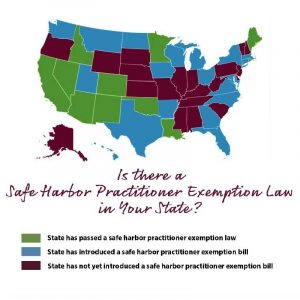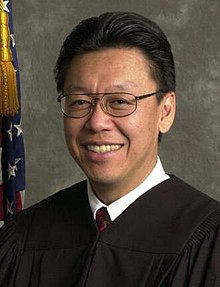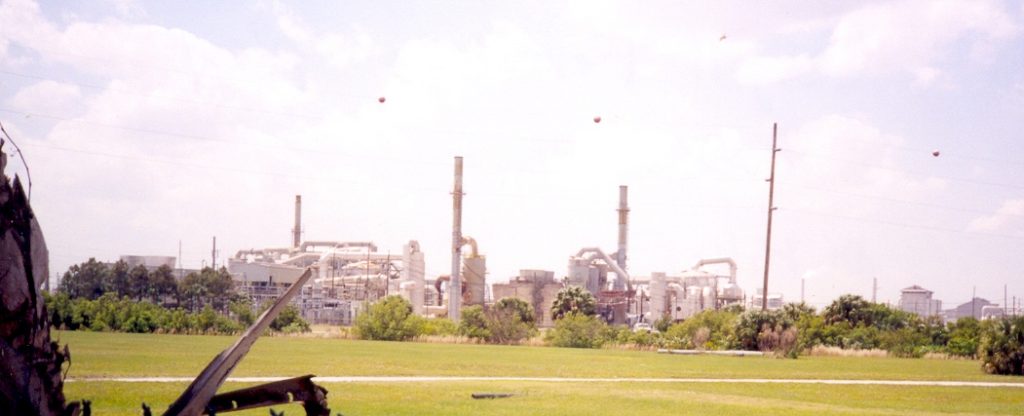
The Fluoride Verdict: A Final Victory or a
Scandal That is Buried?

Judge Edward Chen
On September 25, Judge Edward Chen of the US District Court of Northern California ruled entirely in favor of the plaintiffs in an epochal seven-year legal battle with the Environmental Protection Agency (EPA) over the safety of water fluoridation. Judge Chen ordered the EPA to take regulatory action to eliminate an “unreasonable risk” to the health of children. In particular, the judge’s 80 page ruling found that the fluoridation of water at 0.7 milligrams per liter, the level currently recommended by the Center for Disease Control (CDC), “poses an unreasonable risk of reduced IQ in children.” Judge Chen went on to say “…Reduced IQ poses serious harm. Studies have linked IQ decrements [reductions] of even one or two points to, e.g. reduced educational attainment, employment status, productivity and earned wages.”
NTP report released in August
Judge Chen’s ruling did not specify what measures must be adopted by the EPA, but under the Toxic Substances Control Act (TSCA), once the court rules that a chemical poses an unreasonable risk, the defendant, EPA in this case, is obligated to restrict or eliminate the risk. “One thing the EPA cannot do, in the face of this court’s finding, is to ignore that risk,” he warned in his legal opinion. In August a federal agency released a long-awaited report on the neurotoxicity of fluoride, and it found “a large body” of evidence that as fluoride exposures increase, intelligence in children is lowered. The findings of the National Toxicology Program’s report played a prominent part in the scientific evidence cited by the judge in his opinion.
EPA claims it cannot assess the risk
Oddly enough, even though the defendant, the EPA, admitted that it had seen numerous studies indicating that fluoride may be a neurotoxin (harmful to brains and the nervous system) it had never completed a standard EPA risk assessment framework for fluoride. In its own defense of that omission, EPA argued that it couldn’t calculate the risk it posed because it was too wracked by uncertainty to carry it out. It claimed that it could not determine the “lowest observable adverse effect level” and, hence, could not proceed further in the process. But its critics will all tell you the real reason that the EPA was unwilling to go further with its risk assessment was that there are clearly demonstrated risks from exposures of 4.0 mg/liter and even at 1.50 mg/liter. A margin of safety of 10 should be applied to protect the most vulnerable parts of the population such as children, the elderly, people with reduced kidney function, and those who use more water and get a higher dose. Dividing the known hazard levels by 10 gives a regulatory result of 0.4 mg/liter or even 0.15, which is far below the 0.7 mg/liter that water fluoridation currently provides.
What’s next?
Judge Chen’s verdict does not specify what the EPA should do next. The EPA may even appeal to the verdict to a three-judge Court of Appeals. If EPA does appeal, it has to file a Notice of Appeal to the court within 30 days of the final publication of the judge’s opinion. If there is an appeal, the appeals process would likely consume another 1.5 to 2 years. The plaintiffs feel confident that the findings of fact and law by Judge Chen would not be overturned, but the EPA, represented by attorneys from the Justice Department, would look for possible technical errors that might have been made by the judge in the course of the lengthy trial. Of course, the interested public may become exasperated as the EPA drags the case through an appellate process while the brains of American children continue to be harmed by a neurotoxin that is still being added to the drinking water.
What will EPA do next?
Once the case is resolved and Judge Chen’s ruling remains intact, EPA has to enter into rule making and would be expected to call for either an end to water fluoridation, the most obvious solution, or call for a drastic reduction in the levels of fluoride being added to water. If the EPA chooses the latter route, its proposed rule would be subject to public comment during a given comment period. Comment would be expected to come in from the plaintiffs in the fluoride lawsuit and from Judge Chen himself. Comment would also be expected to come in from top fluoride research scientists in the world, such as the ones who testified so convincingly during the fluoride trial.
Additional facts shed more light
Additional facts can be brought into the public discussion now, facts that were not brought into fluoride trial because the trial had a focus just on fluoride’s harm to children’s intelligence in order to keep the case manageable. But, in fact, water fluoridation has no benefit, no “efficacy” as seen in that dental status is just as good in countries and cities that are not fluoridated as it is in countries and cities that are. Statistically, the main dental impact of water fluoridation is dental fluorosis, a visible damage to the teeth harming dentin as well as enamel and, when fluorosis is occurring, there is also systemic harm to the developing child – in connective tissue and his brain.

Phosphate Fertilizer Plant
Another fact is that 90% of the fluoridation product that is used is hazardous industrial fluoride wastes from phosphate fertilizer plants. It is whatever pollution is captured from the stacks by air pollution control equipment on any given day, laced with some aluminum, some arsenic and some polonium-210 a radioactive element that is naturally found in phosphate rock.
Crest and Colgate put in a cockroach poison
People are already getting too much fluoride in the food supply because it is found in the insecticide cryolite and in the water used in food processing. People are often getting much fluoride exposure from fluoride toothpaste where it is used to poison the bacteria (both harmful and beneficial ones) that are in the mouth. Few people know that in the 1930s sodium fluoride, the usual active ingredient in fluoride toothpastes, was used mainly as a cockroach poison and a rat poison. Do the commercials of Crest and Colgate tell you to brush your teeth with rat poison? Do parents watching their kids brushing their teeth tell their children not to swallow the rat poison? For that matter, does your local friendly water district let you know that they are adding hazardous industrial fluoride wastes to your drinking water? Is it commercially honest to continue to tell customers that this added product is effective in reducing tooth decay and is perfectly safe even for children and for pregnant women, when actually it is not? When is the media going to stop advertising fluoridated products and repeating governmental agency/industry lies and start educating the public with the scientific facts?
Media coverage
In the US, media coverage of Judge Chen’s verdict has been widespread, and it has ranged from excellent to mediocre to mind-scrambling. Perhaps the most important article is the one written by Mike Stobbe for the Associated Press, which accurately told of Judge Chen’s opinion concluding that fluoride added to the water poses an unreasonable risk but then describes as being “another striking dissent to a practice [fluoridation] that has been hailed as one of the greatest public health achievements of the last century.” He then adds “Fluoride strengthens teeth and reduces cavities by replacing minerals lost during normal wear and tear, according to the US Centers for Disease Control and Prevention.” His article is typical of the mainstream news coverage in that it mixes fact with propaganda, leaving the reader with no clear sense of what the judge’s verdict is telling us and a sense of the scandal that it implies. Further, the breaking story of the fluoride verdict was blown off of the front pages by the disaster of a hurricane that jumped from the Florida coast to five inland states and caused unprecedented flooding. Coverage was further blown away by the dramatic coverage of escalating conflict in the Middle East. This was great timing for those who would want to obscure an uncovered fluoridation scandal.

Michael Connett
Don’t wait for the EPA to make the change
The Fluoride Action Network (FAN) was the lead plaintiff in the lawsuit, and it provided a lead attorney, Michael Connett, whose knowledge of the science as well as law made him standout in representing the plaintiffs. FAN’s leaders are telling their followers not to wait for the EPA to bring about the end of water fluoridation. Use the momentum of this victory, they say, to call for an end to fluoridation in every town and city that has it.
Bring the issue back to every one of the dozen or so states that have (unwisely) mandated water fluoridation statewide; get them to repeal their fluoridation mandate. There is some evidence that an avalanche of change may be already starting to happen. Abilene Texas has announced that it will immediately stop water fluoridation. Water supervisors in Yorktown and Somers, two neighboring towns just north of New York City, have announced they want to halt fluoridation in order to protect children. Davis County, in northern Utah with population over 360,000 has announced that the addition of fluoride to their drinking water will be “paused.” Vigorous discussions are taking place in many other places as responsible officials are given the judge’s strongly worded opinion and details of what the science on fluoride actually says.
With the victory in the fluoride trial, a teachable moment.
When fully understood, this victory teaches us that a weird public health mandate, water fluoridation, was imposed upon millions of Americans despite the knowledge by government-industry-media insiders that it was harmful to the children and to many others. This insider knowledge and misconduct went on for most of a century, a stunning scandal. Democracy in America is impaired by such an unholy collusion of government, industry and media; from this, we can learn to always be vigilant to question media-government messages, fight censorship, dig deeper for the truth, and cherish our basic freedom. Let us celebrate now by seeing that, even in our very imperfect democracy, change is possible, and it can happen when people join together and persist in making it happen.
RECENT NEWS


REAL IDs: Refuse this National Surveillance System!
November 13, 2025


Associated Press Attacks Health Freedom Movement
October 30, 2025
